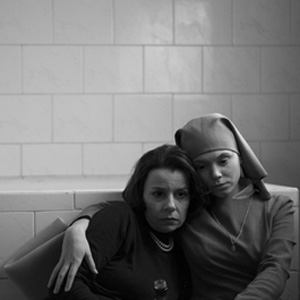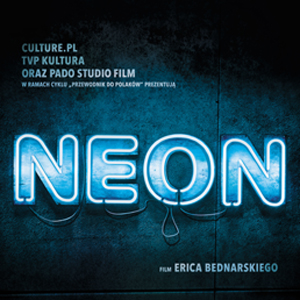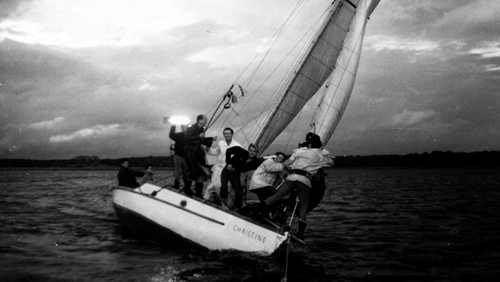 The following essay by Arden Sherman is the third in this six-part column for CR. Developed during Polish Movie Nite, a series of film screenings at The Polish Club in San Francisco, these texts aim to introduce a wide variety of films that might be classified “Polish.” Following Erica Levin’s analysis of Krzysztof Kieslowski’s Camera Buff, the following essay touches on another important Lódz-based filmmaker of the time, Roman Polanski, and his first feature-length film, Knife in the Water (1962).
The following essay by Arden Sherman is the third in this six-part column for CR. Developed during Polish Movie Nite, a series of film screenings at The Polish Club in San Francisco, these texts aim to introduce a wide variety of films that might be classified “Polish.” Following Erica Levin’s analysis of Krzysztof Kieslowski’s Camera Buff, the following essay touches on another important Lódz-based filmmaker of the time, Roman Polanski, and his first feature-length film, Knife in the Water (1962).
– Joanna Szupinska
Nóż w wodzie, or Knife in the Water, is a film about a couple whose sailing trip takes a suspenseful turn when they invite along a hitchhiker they meet on the way to the marina. Directed by Roman Polanski in 1962, Knife in the Water was the first film to come out of Poland whose theme was neither focused on the societal situation in communist Poland, nor did it specifically address the World Wars.
The film was not well received by Polish audiences, and even less so by Polish officials, because it lacked the requisite propaganda value.1 In 1961 Polanski, who co-wrote the script with Jerzy Skolimowski and Jakub Goldberg, submitted it to the Polish Ministry of Culture and was immediately denied permission to make this film. Nine months later, sensing a change in the political climate, Polanski tweaked some of the dialogue to lean more towards Party-centric language and resubmitted the script to the Ministry in 1962 – this time, it passed. So the subtle throws you will see angled in favor of the Party may not have originally been there.2 Polanski was even forced to remove the exterior shots of a Mercedes, which were thought to reflect a Western decadence that was inconsistent with official politics.3
More than any other factor, the contrast between the enthusiastic reception given to the film internationally and its cold reception by the restrictive Polish film industry is what ultimately pushed Polanski’s practice out of Poland. Knife in the Water was nominated for an Academy Award for Best Foreign Film in 1963, the year following its production, and because of its popularity, Polanski was featured on the cover of Time magazine (The Academy Award went to Fellini’s 8 ½). Knife in the Water was the last film (and only feature-length) that Polanski ever made in Polish, and since then, he has only cinematically returned to Poland while filming segments of his 2002 film The Pianist.
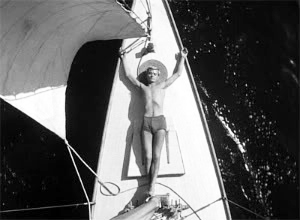 The Party’s dismissal of the film may have been because of some of Polanski’s thematic ploys. At the surface of Knife in the Water is the political theme of class disparity seen through the demonstration of leisure. The seemingly comfortable couple is going on a weekend outing and on their way, almost run over a young, lonely hitchhiker who is traveling with all his belongings on his back. They invite the young man to join them on their sailing trip, propositioning a sort of warfare between the ‘haves’ and the ‘have-nots.’ Such blatant class differences, namely the pro-Party couple who owns a luxury car and sailboat versus the rough and tough, on-the-run student, were not supposed to have existed in the Communist society of Poland in 1962 – though they certainly did, and are seen through Polanski’s clever jabs.4 For example, we never actually find out that hitchhiker’s name, because he is a representation of an entire generation unadorned with the complications (or baggage) of the War. Interestingly, in an interview with Polanski, the director took great joy in pointing out that one of the officials who had required the elimination of the Mercedes from the film actually drove up to the set one day in that very same make and model of car.5
The Party’s dismissal of the film may have been because of some of Polanski’s thematic ploys. At the surface of Knife in the Water is the political theme of class disparity seen through the demonstration of leisure. The seemingly comfortable couple is going on a weekend outing and on their way, almost run over a young, lonely hitchhiker who is traveling with all his belongings on his back. They invite the young man to join them on their sailing trip, propositioning a sort of warfare between the ‘haves’ and the ‘have-nots.’ Such blatant class differences, namely the pro-Party couple who owns a luxury car and sailboat versus the rough and tough, on-the-run student, were not supposed to have existed in the Communist society of Poland in 1962 – though they certainly did, and are seen through Polanski’s clever jabs.4 For example, we never actually find out that hitchhiker’s name, because he is a representation of an entire generation unadorned with the complications (or baggage) of the War. Interestingly, in an interview with Polanski, the director took great joy in pointing out that one of the officials who had required the elimination of the Mercedes from the film actually drove up to the set one day in that very same make and model of car.5
The psychological themes warrant as much consideration as the political ones; the characters are highly developed in their own right. The machismo, the man-vs-man-in-order-to-get-the-girl’s-attention, is at the forefront of this film, in which each of the men takes on the other’s skills hoping to ‘out-man’ each other in order to impress Krystyna – who, for her part, remains unaffected, confident, and of course ultra sexy. Polanski employs a common cinematic trope of the third wheel in which an outside party enters a two-person scenario, shaking up the comfortable dynamic and ultimately shedding light on some sort of truth or reality of the original relationship. (Polanski takes up the triangular relationship again in the 1966 thriller Cul de Sac, when a couple is forced into tight quarters with an unusual outsider.)
The film takes place almost entirely onboard a sailboat. The cast and crew lived for weeks on this tiny, rented vessel throughout the filming, oftentimes having to lean overboard while the camera was rolling to avoid being recorded in shots.6 Equally fascinating, Polanski and his cinematographer Jerzy Lipman were able to capture the sensation of authentic isolation on an endless lake, under such off-screen conditions.
One thing I love about Knife in the Water is the captivating cinematic aesthetic. The black and white shots are dreamy, luscious, and calm. The jazzy, sultry musical score by Krzysztof Komeda enunciates that leisurely activity of a day spent on the water. In fact, Komeda worked with Polanski on many of his films and was known for pioneering the movement known as the Polish School of Jazz.7 You’re probably familiar with another of Komeda’s musical pieces: the creepy, lullaby-ish song from Rosemary’s Baby…
The camera angles in Knife in the Water also continually articulate the triangular relationship. Polanski employs lots of close-up shots of nature and figures, where the action of the scene is shown happening in the background, almost between or through the foreground figures. Perhaps this cinematic tool was employed because it followed in accordance with the policy of the Łódź Film School where Polanski had studied. The policy aimed at ensuring that the students would first learn to tell their stories visually. The aerial montage for this film was made by positioning the camera on top of the sail and shooting downward, capturing each character entertaining themselves, as if each were on the boat alone. The weather throughout the film is almost too appropriate, with its frequent shifts mirroring the changes in mood among the characters. For the duration of the film, we neither see another sailboat on the water, nor is there another person. The lonesome boat on the vast, open water puts pressure on the characters’ relationship. We see similar psychological subjects threaded throughout Polanski’s film career, where extreme isolation reaches claustrophobia in his next feature-length film, Repulsion, from 1965. And in his perhaps best-known film, Rosemary’s Baby, themes of deception among loved ones, isolation, and paranoia are on the surface. Always interested in thrillers and dramas (both on and off screen), Polanski remains one of the most important filmmakers of the last century.
CR
Footnotes
- “No Idea What Became of Him” Epinions.com review of Knife in the Water by member Metalluk
- Roman Polanski, “Knife in the Water,” Roman: an autobiography, published by William Morrow and Company, 1984
- “No Idea What Became Him”
- ibid. “No Idea What Became Him”
- ibid. “No Idea What Became Him”
- Peter Cowie, “Knife in the Water” review for Criterion Collection.com
- Wikipedia.com, Krysztof Komeda
Photos
- The filming of Knife in the Water
- A still from Knife in the Water
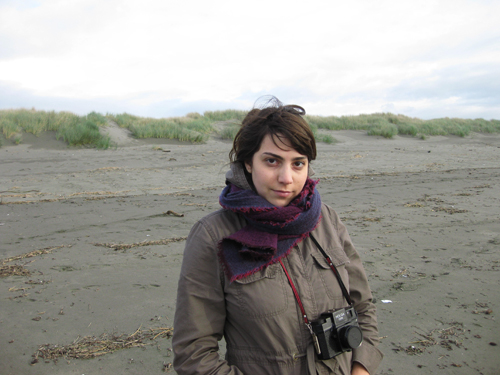 Arden Sherman is a curator and writer. She is currently serving as interim director of the Laband Art Gallery at Loyola Marymount University in Los Angeles. She earned her MA in Curatorial Practice at the California College of the Arts, San Francisco, and her BA at the College of Charleston, South Carolina, where she studied sculpture and Latin American studies.
Arden Sherman is a curator and writer. She is currently serving as interim director of the Laband Art Gallery at Loyola Marymount University in Los Angeles. She earned her MA in Curatorial Practice at the California College of the Arts, San Francisco, and her BA at the College of Charleston, South Carolina, where she studied sculpture and Latin American studies.
